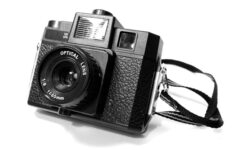Buying a digital camera can be a dizzying experience for people who are new to photography.
The range of products on the market is huge. The spectrum runs from inexpensive compact cameras, that can slip into a pocket or purse, to robust and sizable professional digital Single Lens Reflex (SLR) cameras, that can be used to make photographs large enough to be used on billboards. Even the choice of brands – including Canon, Lumix, Nikon, Olympus, and Sony – can be confusing for potential buyers.
Buying a Digital Camera
So where should people start their search for a digital camera?
Sometimes it is easier for people to consider what they should not do – rather than what they should – in order to identify the digital camera that best suits their needs:
- Don’t head to the local photography store without first having undertaken some market research. By scanning through photography magazines and internet sites potential buyers can pick up buzz words, get a feel for market prices and quickly learn about the cameras currently on the market. This can help the consumer in asking sensible, informed questions.
- Don’t flick through magazines and pages on the internet that has become outdated. The technology employed in cameras is ever-evolving. Magazines that are just a year old will not list the latest marks and offers.
- That said, don’t write off slightly older cameras simply because they have been on the market for a couple of years. The latest cameras will have newer technology but there are many very good, slightly older digital cameras. Though not at the cutting edge of developments, they may meet the buyers’ requirements and some may be on special offer and consequently offer good value for money.
Getting a Feel for Digital Cameras
- Don’t buy without first handling the equipment. Get a feel for the camera and whether it feels right.
- Don’t assume that a particular type of camera would be the most suitable purchase without looking at alternatives. New models, which blur the traditional boundary between consumer cameras and digital SLRs have entered the market recently. These may be well-suited to an individual’s needs.
Megapixels and Digital Cameras
- Don’t assume that size is everything. Digital cameras record images as a mosaic of pixels representing light and shade. The number of pixels (often expressed as megapixels) is often a deciding factor in which camera people buy; the assumption is that more is always better. However, the quality of the lens and the speed of the shutter release are also among the factors that influence how a photograph will look.
Compare Digital Cameras Before Buying
- Don’t rush into buying a camera made by a specific brand without looking at similar offers by rival producers.
- Don’t forget to check the prices of accessories such as batteries, memory cards, flash units, and additional lenses before weighing up which product represents the best value for money.




